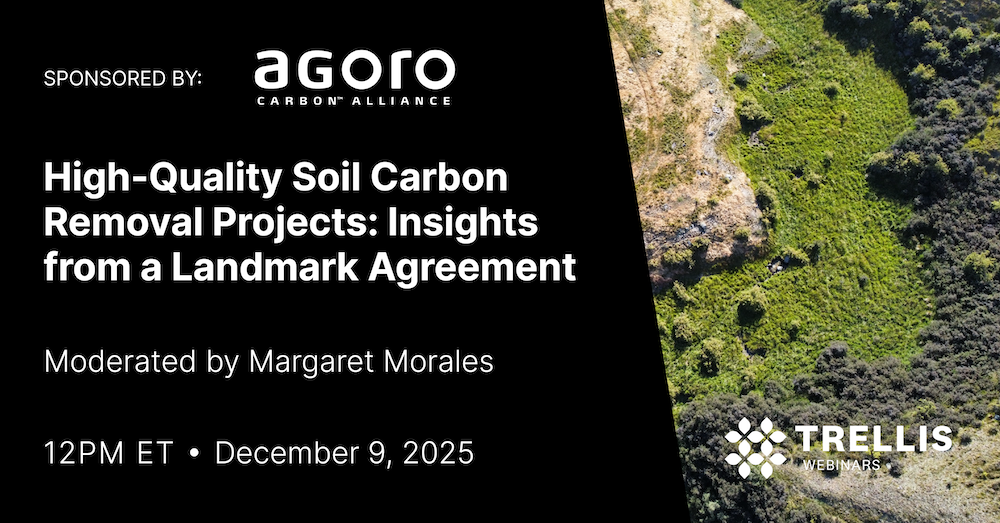Dragon Bravo Fire containment drops as dry weather conditions continue – KVOA

Report on the Dragon Bravo Fire and its Implications for Sustainable Development Goals
Incident Summary
- Event: Dragon Bravo Fire
- Location: North Rim, Grand Canyon, Arizona
- Start Date: July 4, 2025
- Cause: Lightning Strike
- Current Status: The fire has grown to over 55,000 acres with 13 percent containment. It has expanded three to four miles north along its western flanks.
- Oversight: The incident is managed by the Southwest Area Complex Incident Management Team Two.
Impact on SDG 15: Life on Land
The Dragon Bravo Fire poses a severe threat to the achievement of SDG 15, which aims to protect, restore, and promote the sustainable use of terrestrial ecosystems and halt biodiversity loss.
- Ecosystem Destruction: Over 55,000 acres of the unique Grand Canyon ecosystem have been burned, directly impacting forests and vital habitats.
- Biodiversity Loss: The fire threatens critical wildlife populations within the Grand Canyon National Park, a globally significant conservation area. Response efforts are focused on protecting “values at risk,” which includes wildlife and their habitats.
- Land Degradation: The scale of the fire contributes to significant land degradation, undermining efforts to combat desertification and restore natural lands.
Challenges to SDG 13: Climate Action
This event underscores the urgent need for climate action as outlined in SDG 13. The fire is both a symptom of and a contributor to climate change.
- Climate-Related Drivers: Firefighting efforts are challenged by extreme conditions, including a persistent dry air mass, difficult terrain, and high winds, all of which are exacerbated by climate change.
- Carbon Emissions: Large-scale wildfires release vast amounts of stored carbon into the atmosphere, creating a negative feedback loop that accelerates climate change and hampers global efforts to reduce greenhouse gas emissions.
Community and Economic Impacts (SDG 11 & SDG 8)
The fire directly impacts the safety, resilience, and economic stability of local communities, challenging the progress of SDG 11 (Sustainable Cities and Communities) and SDG 8 (Decent Work and Economic Growth).
- Community Safety (SDG 11): Fire suppression efforts are focused on protecting structures and infrastructure in areas such as House Rock, highlighting the vulnerability of human settlements to climate-related disasters.
- Economic Disruption (SDG 8): The closure of the North Rim of Grand Canyon National Park for the remainder of the 2025 season will cause significant economic losses for the region’s tourism-dependent economy, affecting local businesses and employment.
- Infrastructure Disruption (SDG 11): The closure of State Route 67 and the implementation of a Temporary Flight Restriction (TFR) disrupt transportation and access, isolating communities and impacting services.
Public Health and Well-being (SDG 3)
The wildfire presents a direct risk to public health, a core component of SDG 3 (Good Health and Well-being).
- Air Quality: Smoke from the fire is degrading regional air quality, posing health risks to residents and visitors, particularly those with respiratory conditions.
- Public Information: Authorities are directing the public to online air quality monitoring portals as a mitigation measure to help individuals protect their health.
Response Priorities and Inter-Agency Partnerships (SDG 17)
The coordinated response to the Dragon Bravo Fire exemplifies the multi-stakeholder partnerships required by SDG 17 (Partnerships for the Goals) to manage complex global challenges.
- Priority 1: Ensure the safety of all firefighting personnel and the public.
- Priority 2: Actively suppress the fire’s progression, particularly its northeastward push.
- Priority 3: Continue the protection of structures, wildlife habitats, and other critical assets.
- Priority 4: Conduct ongoing assessment and preparation activities in at-risk communities.
- The management of the incident by a Complex Incident Management Team, in coordination with the National Park Service and the Federal Aviation Administration, demonstrates a robust partnership approach to disaster response and mitigation.
SDGs Addressed in the Article
-
SDG 15: Life on Land
This goal is central to the article, which focuses on a massive wildfire (“Dragon Bravo fire”) burning in a forest ecosystem on the North Rim of the Grand Canyon. The fire directly impacts terrestrial ecosystems, forests, and wildlife. The text mentions the fire has “grown past 55,000 acres,” highlighting the destruction of land. It also refers to “wildlife assessment,” indicating a direct concern for the fauna within this habitat.
-
SDG 11: Sustainable Cities and Communities
The article addresses this goal by detailing the fire’s impact on human safety, infrastructure, and cultural/natural heritage. It mentions efforts to protect “values at risk,” including “structure…assessment and preparations in the House Rock area.” The closure of the North Rim of Grand Canyon National Park for the season represents a threat to safeguarding natural heritage. Furthermore, road closures (“U.S. Route 89A,” “state Route 67”) and the temporary closure of businesses (“Kaibab Camper Village and Jacob Lake Inn”) show the disaster’s disruption to community life and infrastructure, making communities less safe and resilient.
-
SDG 13: Climate Action
While the fire’s cause is lightning, the article describes conditions conducive to such large-scale disasters, which are often exacerbated by climate change. Phrases like “extreme fire activity” and a “dry air mass” point to climate-related hazards. The entire incident response, managed by the “Southwest Area Complex Incident Management Team Two,” is an example of strengthening resilience and adaptive capacity to natural disasters, a key aspect of climate action.
-
SDG 3: Good Health and Well-being
The article connects to this goal by highlighting the health risks associated with the wildfire. It explicitly states that “Residents and visitors affected by smoke can monitor air quality online,” acknowledging the threat of air pollution from the fire and providing a tool for the public to mitigate health risks.
Specific Targets Identified
-
Target 15.2: Promote sustainable management of all types of forests, halt deforestation, restore degraded forests.
The wildfire represents a massive setback to sustainable forest management. The firefighting efforts, including the goal of suppression and containment, are direct actions related to managing this forest disaster.
-
Target 15.5: Take urgent action to reduce the degradation of natural habitats and halt the loss of biodiversity.
The fire is causing significant degradation of a natural habitat within the Grand Canyon National Park. The mention of conducting “wildlife assessment” is a direct action aimed at understanding the impact on biodiversity, which is a precursor to any protective measures.
-
Target 11.4: Strengthen efforts to protect and safeguard the world’s cultural and natural heritage.
The Grand Canyon National Park is a site of immense natural heritage. The fire directly threatens this heritage, and the closure of the North Rim is a measure taken in response to this threat, highlighting the challenge of protecting it.
-
Target 11.5: Significantly reduce the number of people affected and decrease the direct economic losses caused by disasters.
The article describes a disaster affecting people through park and road closures. The closure of the park for the “rest of the 2025 season” implies significant direct economic losses for the tourism sector and related businesses mentioned.
-
Target 13.1: Strengthen resilience and adaptive capacity to climate-related hazards and natural disasters.
The mobilization of the “Southwest Area Complex Incident Management Team Two” and the coordinated efforts of firefighters to suppress the fire demonstrate a strategy to manage and build resilience against a natural disaster.
-
Target 3.9: Substantially reduce the number of deaths and illnesses from air pollution and contamination.
The advisory for residents and visitors to “monitor air quality” due to smoke is a preventative measure aimed at reducing illnesses caused by air pollution from the fire.
Indicators Mentioned or Implied
-
Indicator related to Target 15.2:
The article provides a direct metric for the scale of forest degradation: the fire has “grown past 55,000 acres.” It also gives a progress indicator for managing the disaster: “13 percent containment.” These figures measure the extent of the damage and the progress toward controlling it.
-
Indicator related to Target 11.5:
Direct economic loss is implied through the statement that “The North Rim of Grand Canyon National Park will stay closed for the rest of the 2025 season.” This closure directly impacts tourism revenue and local businesses, serving as a qualitative indicator of economic loss.
-
Indicator related to Target 3.9:
The article implies the use of an air quality monitoring system by providing a link for residents to “monitor air quality.” The data from such a system (e.g., levels of particulate matter) would be a direct indicator used to measure air pollution and inform the public of health risks.
-
Indicator related to Target 13.1:
The existence and deployment of a “Southwest Area Complex Incident Management Team” and the implementation of public safety measures like road closures and flight restrictions serve as an indicator of a local disaster risk reduction strategy in action, which is a key part of Indicator 13.1.2.
Summary of SDGs, Targets, and Indicators
| SDGs | Targets | Indicators |
|---|---|---|
| SDG 15: Life on Land | 15.2: Promote sustainable management of all types of forests.
15.5: Take urgent action to reduce the degradation of natural habitats. |
Area of forest affected by the fire (“grown past 55,000 acres”).
Progress in controlling the fire (“13 percent containment”). Actions taken to understand biodiversity impact (“wildlife assessment”). |
| SDG 11: Sustainable Cities and Communities | 11.4: Strengthen efforts to protect and safeguard the world’s cultural and natural heritage.
11.5: Significantly reduce the number of people affected and decrease direct economic losses from disasters. |
Closure of a natural heritage site (“North Rim of Grand Canyon National Park will stay closed”).
Implied direct economic loss from park and business closures for the season. |
| SDG 13: Climate Action | 13.1: Strengthen resilience and adaptive capacity to climate-related hazards and natural disasters. | Existence and deployment of a disaster risk reduction strategy (mobilization of “Southwest Area Complex Incident Management Team Two,” road closures, flight restrictions). |
| SDG 3: Good Health and Well-being | 3.9: Substantially reduce illnesses from air pollution. | Provision of tools for the public to “monitor air quality” due to smoke, implying measurement of air pollutants. |
Source: kvoa.com

What is Your Reaction?
 Like
0
Like
0
 Dislike
0
Dislike
0
 Love
0
Love
0
 Funny
0
Funny
0
 Angry
0
Angry
0
 Sad
0
Sad
0
 Wow
0
Wow
0













































































